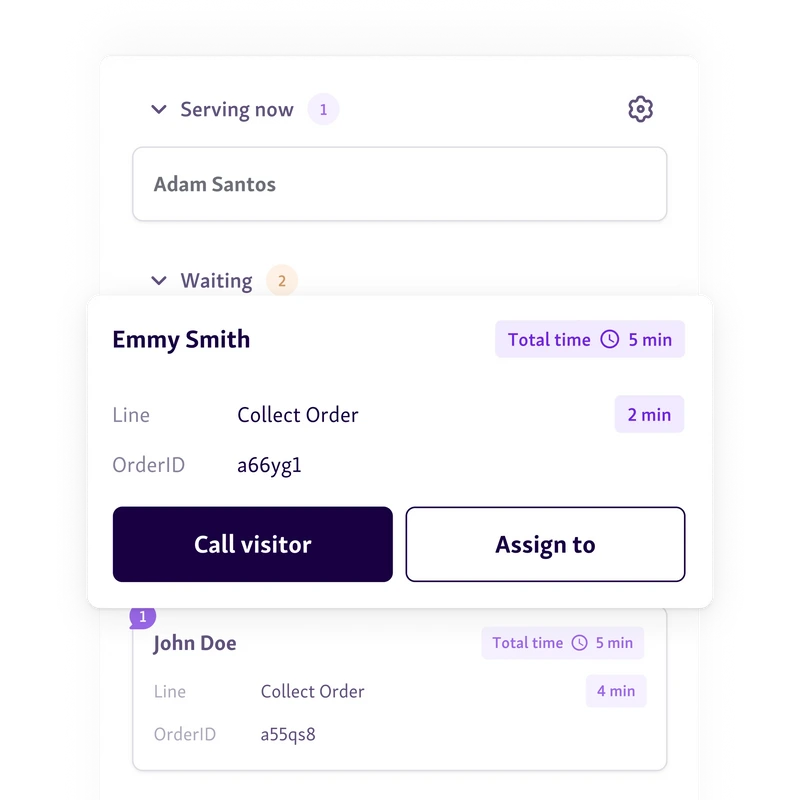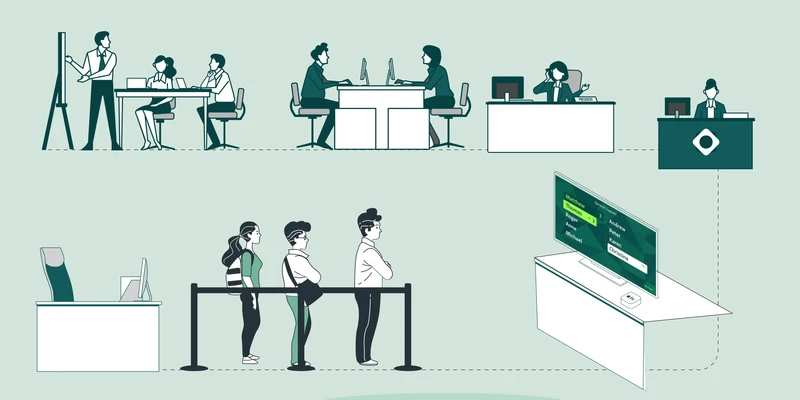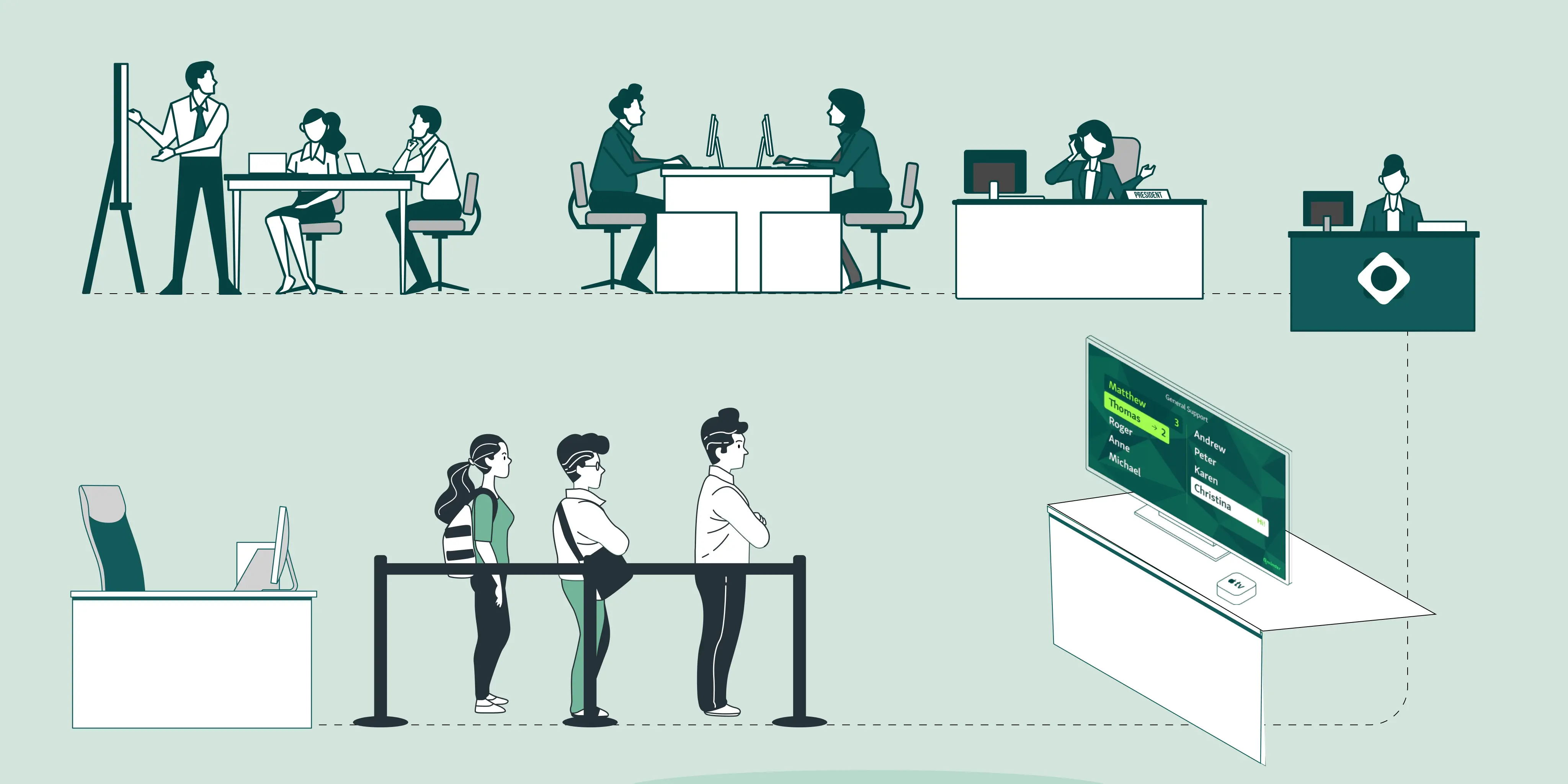Long wait times and delays are one of the most common frustrations citizens face when dealing with public services.
Whether it's applying for a permit, renewing a license, or seeking support, inefficient service time in public sector often reflects poorly on a government office’s ability to meet community needs. People now expect quick, organized, and transparent experiences, even from public institutions.
The good news? There are clear, manageable factors that influence service time, and with the right tools and strategies, offices can significantly improve.
In this blog, we’ll explore the key reasons behind slow service delivery and how modern solutions like digital queue management and appointment scheduling can help streamline operations and enhance public trust.
Why Service Time Matters in the Public Sector
Service time in public sector isn’t just a metric, it’s a reflection of how accessible and responsive a government office is to the people it serves.
Long delays can erode public trust, while efficient service builds credibility and customer satisfaction. Internally, poor service time in public sector leads to staff burnout, operational backlogs, and reduced productivity.
From a broader perspective, the way people perceive their experience with public services can shape their willingness to engage and comply with future processes.
Citizen Trust & Satisfaction: Long waits lower satisfaction and reduce confidence in public institutions.
Staff Burnout & Inefficiencies: Constant pressure to catch up increases stress and lowers overall effectiveness.
Public Perception & Compliance: A poor service experience can discourage engagement and reduce civic participation.
Major Factors Affecting Service Time
Efficient government service delivery is often challenged by several underlying factors that slow down operations and increase wait times.
1. Unpredictable Walk-In Traffic
Fluctuating visitor flow is one of the most common challenges in public offices. Without scheduled appointments, staff can’t anticipate demand, leading to overcrowded lobbies at certain times and idle periods at others. This imbalance disrupts operations and contributes to longer overall service times.
Makes it harder to prioritize urgent or time-sensitive cases
Limits ability to plan staff shifts and coverage effectively
Causes bottlenecks in services requiring multi-step approvals
Reduces overall throughput due to poor traffic distribution
Read more - How Improving Citizen Flow Can Deliver Measurable ROI for Local Governments
2. Manual or Paper-Based Processes
Relying on paper forms and manual data entry significantly slows down service delivery in government offices. Staff must process information step by step, often re-entering the same data into different systems. This not only delays services but also introduces room for human error.
Requires extra time for sorting, filing, and retrieving documents
Creates dependency on physical presence and signatures
Delays coordination between departments due to lack of shared access
Increases administrative burden during audits or follow-ups
3. Lack of Pre-Visit Information
When visitors arrive without submitting details beforehand, staff must spend additional time collecting basic information during the appointment. This extends the overall service time and often leads to repetitive back-and-forth questions, delaying issue resolution.
Limits ability to prepare documents or route requests in advance
Increases service time per visitor
Causes bottlenecks during peak hours
Reduces the number of citizens staff can assist daily
4. Staff Shortages or Skill Gaps
Insufficient staffing or a lack of adequately trained personnel directly slows down service delivery. When offices are understaffed or staff members lack specific skills, each interaction takes longer, and errors are more likely to occur.
Delays form during peak traffic hours
Inexperienced staff require more guidance and time per case
Increased pressure leads to burnout and turnover
Citizens may be redirected or asked to return later
5. Inadequate Use of Technology
When government offices don't use modern tools, they lose valuable time to outdated systems. Without real-time visibility or automation, service teams struggle to stay efficient and responsive.
No tracking of visitor volume or peak hours
Staff rely on guesswork instead of data
Manual updates slow down internal coordination
Citizens face inconsistent and disjointed experiences
Also read - 4 Ideas to Reduce Customer Service Wait Times
How to Manage and Improve Service Time
Managing service time effectively requires a mix of planning, the right technology, and process optimization. Long waits and inefficient workflows don’t have to be the norm in public offices
1. Implement Smart Appointment Scheduling Tools
Smart appointment scheduling brings structure to visitor flow, helping public offices plan staffing and resources more efficiently. Instead of reacting to unpredictable walk-ins, teams can operate with a clear schedule and serve citizens faster. It also creates a better experience for visitors, who spend less time waiting and more time getting their issues resolved.
Balanced Visitor Flow: Appointments spread traffic evenly throughout the day, reducing rush-hour congestion and idle periods.
Staff Preparedness: When staff know the purpose of each visit in advance, they can prepare documents or route visitors more efficiently.
Improved Service Planning: Predictable scheduling lets managers allocate the right number of staff to the right services.
With Qminder, citizens can book appointments online and submit key information beforehand. This enables staff to greet visitors by name, review their needs in advance, and serve them faster with personalized service.

2. Digitize Check-In and Queuing
Replacing manual check-in processes with digital tools streamlines the first step of the service journey. Visitors can register themselves via kiosks or smartphones, freeing up staff and minimizing front-desk congestion. A clear, visible queue system also sets expectations and reduces perceived wait times in government offices.
Faster Self Check-In: Kiosks and mobile sign-ins allow visitors to check in instantly without waiting for staff assistance.
Reduced Front-Desk Workload: Staff no longer need to manually register or direct visitors, saving time for more complex tasks.
Queue Transparency: Digital displays show wait times and order, reducing confusion and improving satisfaction.
Qminder offers mobile check-in, self-service kiosks, and waiting room displays that keep both visitors and staff informed in real time, enhancing efficiency and the overall experience.

3. Train Staff with Role-Specific Workflows
Training government staff to handle specific service types ensures quicker resolution and smoother handoffs. Instead of a one-size-fits-all approach, role-specific workflows align skills with responsibilities, reducing confusion and rework. Structured knowledge improves response time and boosts confidence across teams.
Service-Specific Training: Staff learn exactly how to handle tasks related to their assigned services, reducing hesitation and delays.
Use of Internal Notes: Notes help staff pick up where the last interaction left off, without needing citizens to repeat information.
Tag-Based Handoffs: Tags streamline communication between departments and reduce misrouting.
An appointment queue software can help teams stay aligned by offering internal notes and tags visible at each handoff, making transitions between service desks smoother and more efficient.
4. Use Real-Time Data to Monitor and Optimize
Without real-time visibility, it’s difficult to identify inefficiencies or adapt to changing service demands. By actively tracking key metrics like wait times, visitor volume, and staff output, government offices can make smarter decisions on the fly and plan better for the future.
Track Service Metrics: Monitor how long each service takes to identify bottlenecks or underperforming areas.
Identify Peak Hours: Know when visitor volume spikes to allocate more staff proactively.
Review Staff Performance: Analyze individual staff data to support training and shift planning.
Qminder’s built-in analytics dashboard offers detailed insights into service data, helping managers continuously refine processes and improve citizen experience.

5. Enable Cross-Department Collaboration
When different departments work in silos, service times suffer—especially when citizens are bounced between desks, forced to repeat information. Sharing context and communication tools across teams leads to faster handoffs and more seamless service.
Centralized Visitor History: Let staff view past interactions and details in one place.
Service Notes for Context: Add relevant notes to each visitor’s profile to avoid repeated questions.
Smoother Handoffs: Ensure departments can easily coordinate without delays or confusion.
Appointment queue software supports collaborative workflows by allowing staff to tag visitors, leave service notes, and access visitor history, making cross-department service faster and more coherent.

You might also like - How Virtual Queuing Can Solve the DMV’s Long Wait Times
Case Example: How Greensboro Optimized Its Service Time
The City of Greensboro, North Carolina, faced familiar challenges shared by many public offices: walk-in visitors, long queues, and outdated sign-in procedures. Their traditional check-in system created congestion, long wait times, and inefficiencies—issues that worsened during the pandemic, when contactless service became essential.
To address this, Greensboro adopted Qminder’s digital queue management system. The tool allowed for self check-in via tablet kiosks, two-way text messaging, and remote form completion. Staff could access visitor details before interaction, ensuring faster service and better preparation.
Key outcomes included:
Reduced face-to-face contact and faster service handoffs
Streamlined check-in and queue visibility for citizens
Empowered staff with real-time visitor data and less manual crowd control
Qminder’s flexibility and ease of use helped Greensboro not only meet urgent safety needs but also build a more efficient and citizen-friendly experience.
Rethink Service Time for Better Outcomes
Improving service time isn’t about rushing citizens through a process—it’s about removing the unnecessary friction that causes delays. From unpredictable foot traffic to outdated check-in methods, every inefficiency adds up.
Modern tools like Qminder allow government offices to streamline service without sacrificing quality or personalization. By enabling smarter queuing, pre-visit data collection, and real-time communication, these tools help create faster, smoother experiences for both staff and the public.
The first step is simple: audit your current workflows and identify the biggest slowdowns. Start with small, high-impact changes and build from there.
Explore how Qminder can help transform your service operations.
Citizen feedback provides valuable insights into service bottlenecks and areas for improvement, allowing government offices to streamline processes and address pain points efficiently. Regularly collecting and analyzing feedback helps in making data-driven decisions for continuous improvement.
An optimized office layout helps in minimizing congestion, directing citizens to the right service points quickly, and improving overall flow, reducing wait times and service delays. A well-designed space ensures smoother transitions between steps and better staff allocation.
Yes, multilingual support ensures faster communication, reducing misunderstandings and delays, and allowing a more inclusive, efficient service experience for diverse communities. It empowers citizens to access services more easily and ensures equitable service for all.





